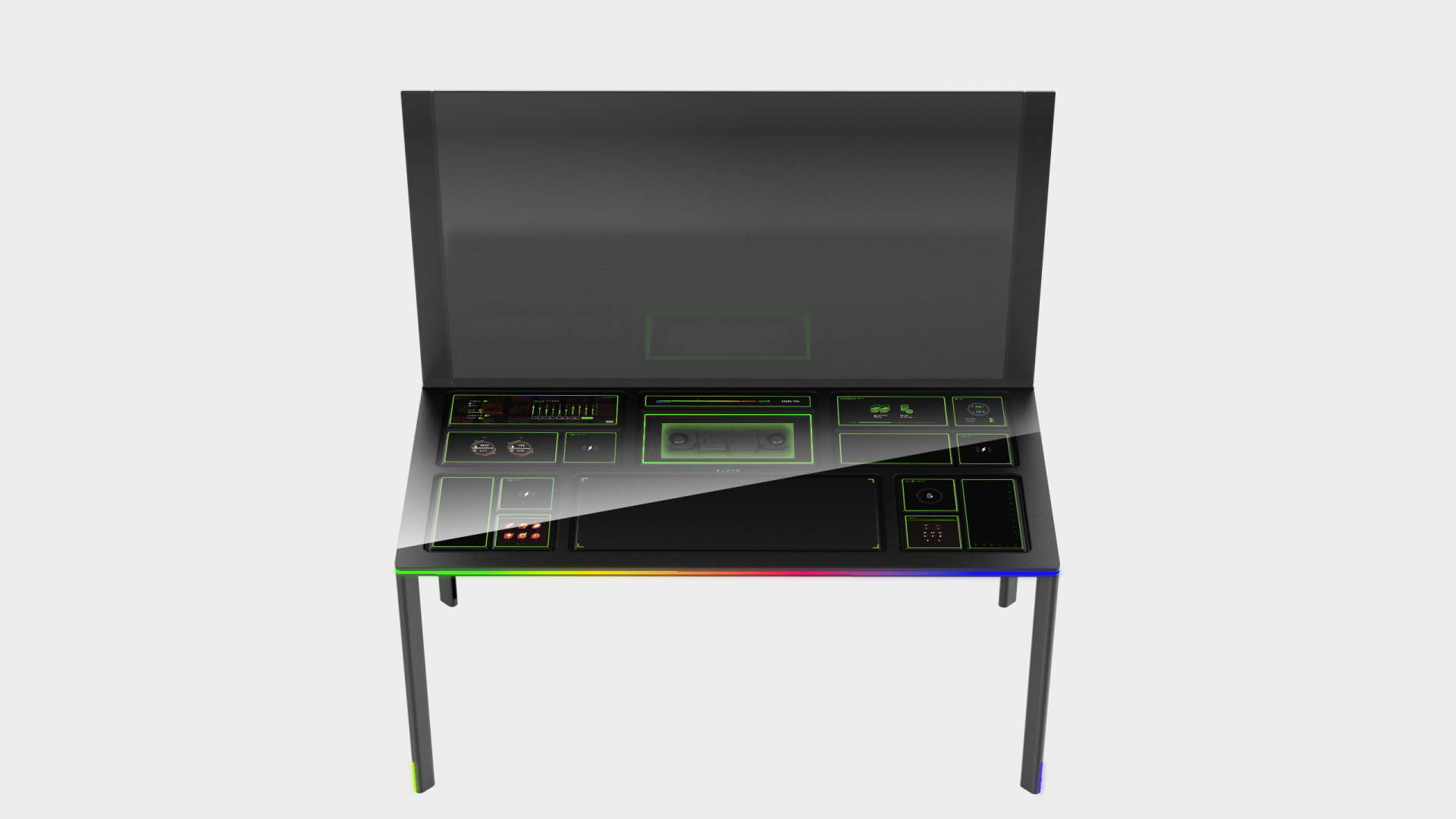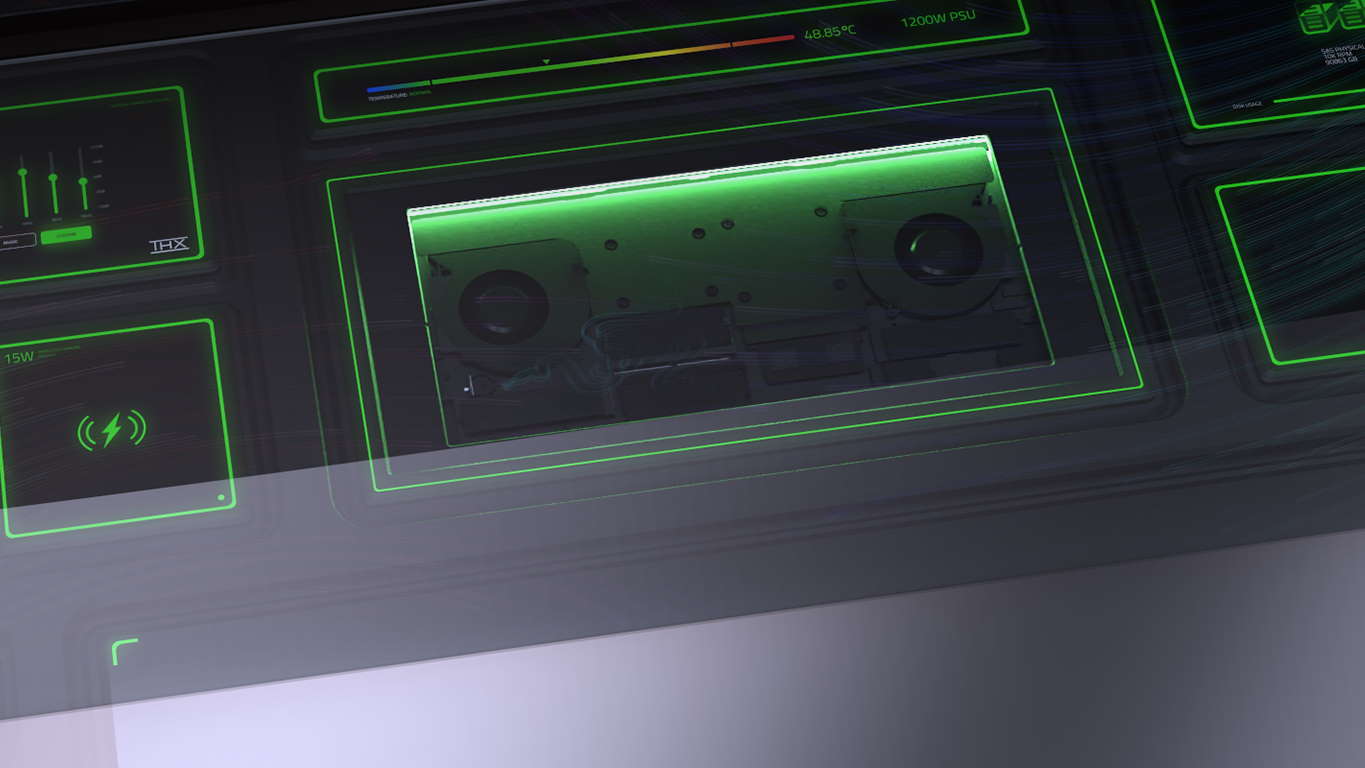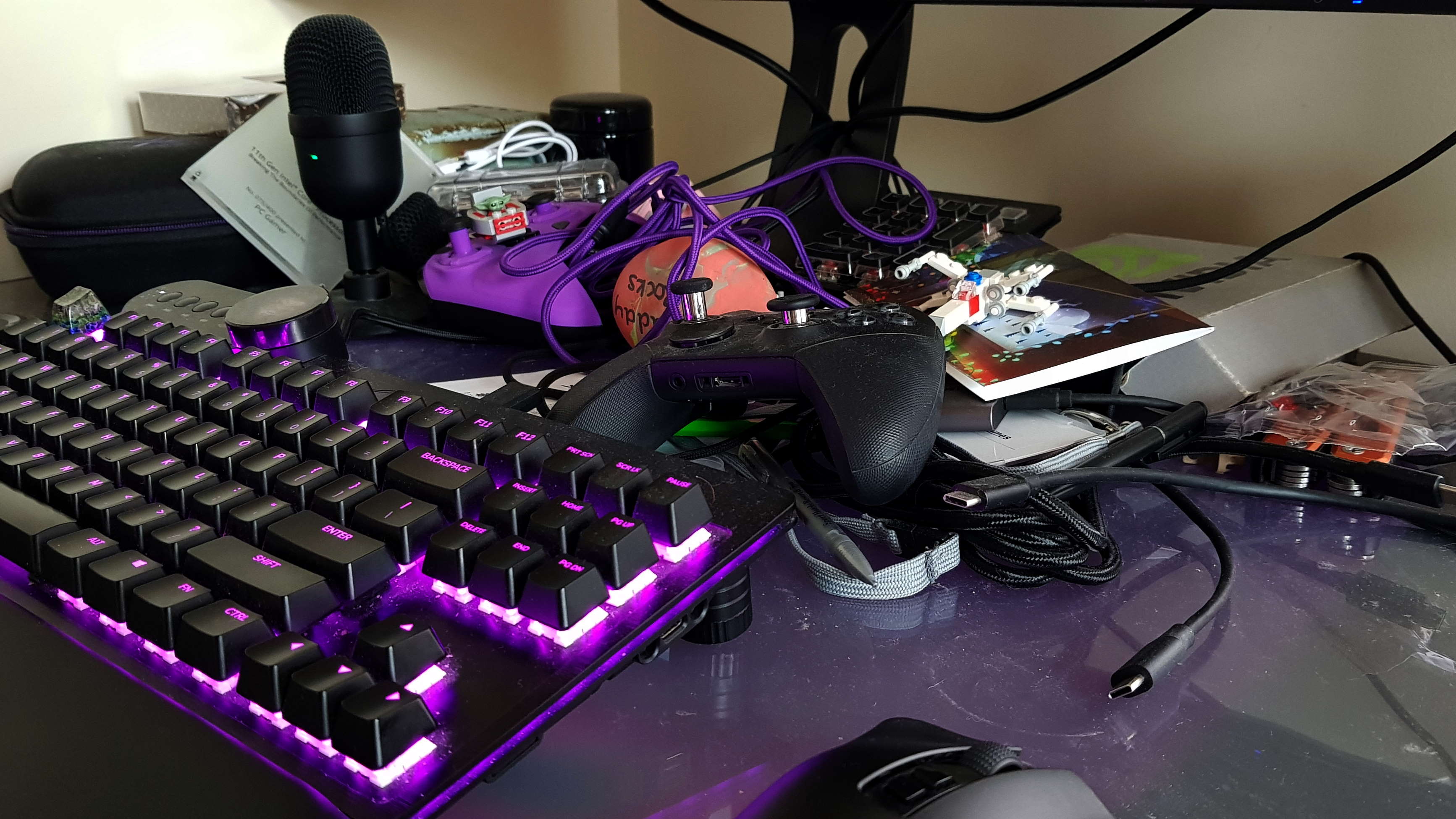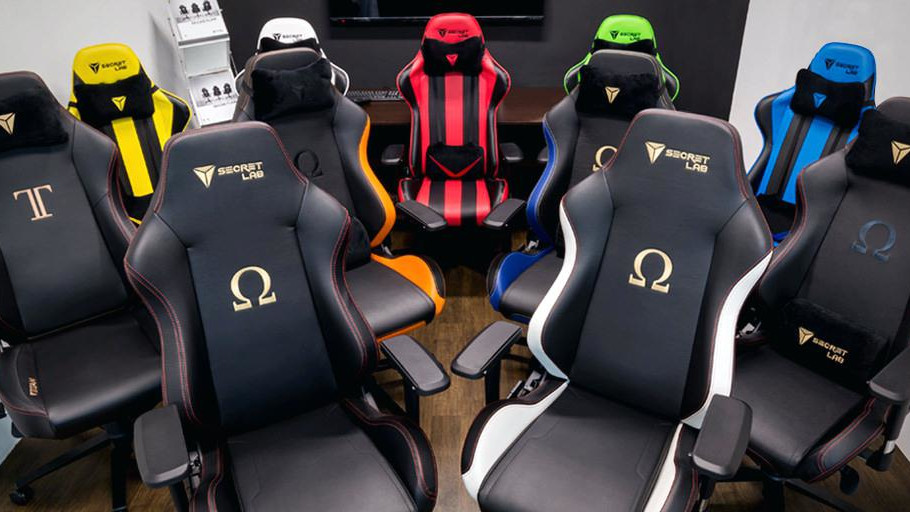Razer's modular desk concept looks like a massive gaming laptop with legs. And I've got to have it
I've always wanted a control console from a Star Trek starship and Razer's latest CES concept design delivers all that.

Well, this is more like it: a CES 2022 concept design that's relatively fresh and delightfully ridiculous. I give you Razer's Project Sophia, a modular gaming desk concept that promises to be "the gaming battlestation of the future" that still somehow feels like a giant laptop.
The basic idea is a gaming desk with a glass top, under which you can slot in thirteen separate modules to really personalise your setup. These modules range from system monitoring gubbins, secondary, tertiary, and maybe even quandary screens, pen tablets, or a cup warmer.
If I want a cup of tea kept warm, I just balance it on the GeForce RTX 3090 built into my desk. That does the job, but doesn't like a spill. So maybe a glass-topped warmer is a better option. Thanks, Razer.
Project Sophia promises desktop performance in a desk, though the actual computing module looks very much like it might be using mobile components—it looks every bit like someone ripped the PCB out of a Blade laptop and slapped it under a coffee table.
Now, there's a homebrew project I could get behind.
The claim of desktop performance still stands, however, as modern mobile GPUs and CPUs are so close to their larger cousins that they're able to deliver a supreme amount of gaming grunt. As we've seen from the latest hardware that AMD, Nvidia, and Intel have announced already this year for gaming laptops coming in the next few months.
The slim design, enabled by the use of such components, makes the Project Sophia desk look pretty damned slick. And, of course it's Chroma RGB enabled with a wide lightband circling the desktop itself.
Keep up to date with the most important stories and the best deals, as picked by the PC Gamer team.

But the main allure of Razer's concept design is its modularity, the ability to magnetically attach a host of these different modules to the underside of your glass-top desk, giving you access to system information, hot keys, and other such goodies tailored to your own needs. Razer provides example layouts for The Gamer, The Creator, The Streamer, and The WFH, each with different setups for their individual perceived tastes.
I'll be honest, I don't really see the need for most of these modules, I mean I really don't need to see exactly what speed by CPU and GPU are running at 24/7. If I did, then the screen on top of my NZXT Kraken cooler would be displaying that rather than the GIF of Holly from Red Dwarf that's currently looping in my rig.



Sure, maybe a streamer will want to monitor the production, and need touchscreen hot keys to switch between things without resorting to something so sordid as a physical Loupedeck or Elgato Stream Deck—physical buttons, how gauche—but a lot of these modules are needless distractions from the gaming main event on-screen.
I mean, I don't want to burn a palm casually reaching for my mouse only to rest a hand on the cup warmer module. But I do wonder if you might be able to overclock it, turn it into some single-ring burner and cook eggs on your desktop.
There's also the fact that I would bet few of you have completely clear desktops. With all the different modules and displays on offer baked into the lid of the Project Sophia concept, where's all this going to live?


Best chair for gaming: the top gaming chairs around
Best gaming desk: the ultimate PC podiums
Best PC controller: sit back, relax, and get your game on
I'm already lucky enough to have a gaming desk with a PC built into it, one with a glass top, too. Though mine's a hell of a lot chunkier as the Lian Li DK04 houses full size PC components. And I can happily leave stuff cluttering up the top of it, though I do understand that image above will probably give some people nightmares.
But I still cannot help but really want the Project Sophia desk for my own despite all this.
Forget the 65-inch OLED screen it has strapped to the end of it (which only adds to the massive-laptop-on-legs aesthetic), the fact that it looks like the control console from a shadowy Section 31 ship in Star Trek means my unrelentingly nerdy side needs this in my life.
Unlike the tired Alienware concept products Dell's gaming wing showed off this week, Razer's never-to-be-released desktop may be mostly pointless in real terms, but it actually comes with the most important thing a concept design needs: desirability.
So yeah, do want.

Dave has been gaming since the days of Zaxxon and Lady Bug on the Colecovision, and code books for the Commodore Vic 20 (Death Race 2000!). He built his first gaming PC at the tender age of 16, and finally finished bug-fixing the Cyrix-based system around a year later. When he dropped it out of the window. He first started writing for Official PlayStation Magazine and Xbox World many decades ago, then moved onto PC Format full-time, then PC Gamer, TechRadar, and T3 among others. Now he's back, writing about the nightmarish graphics card market, CPUs with more cores than sense, gaming laptops hotter than the sun, and SSDs more capacious than a Cybertruck.

